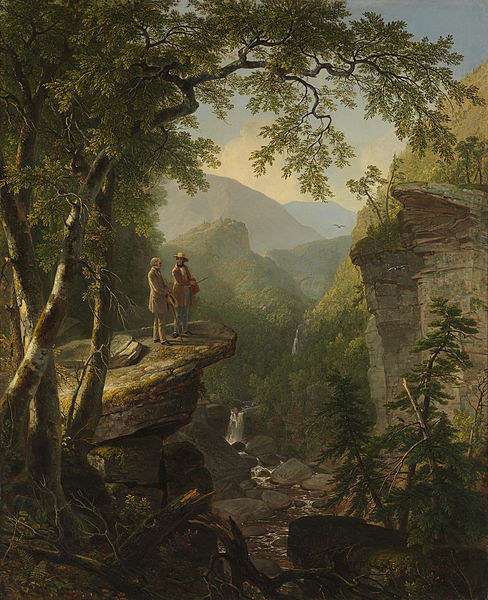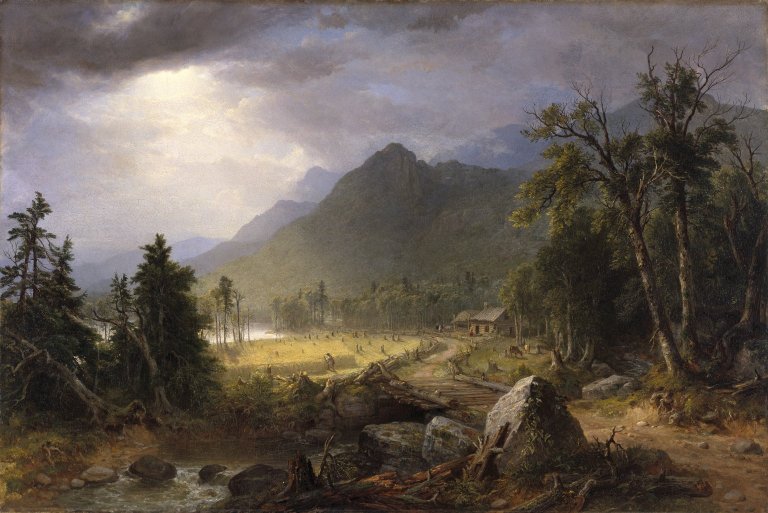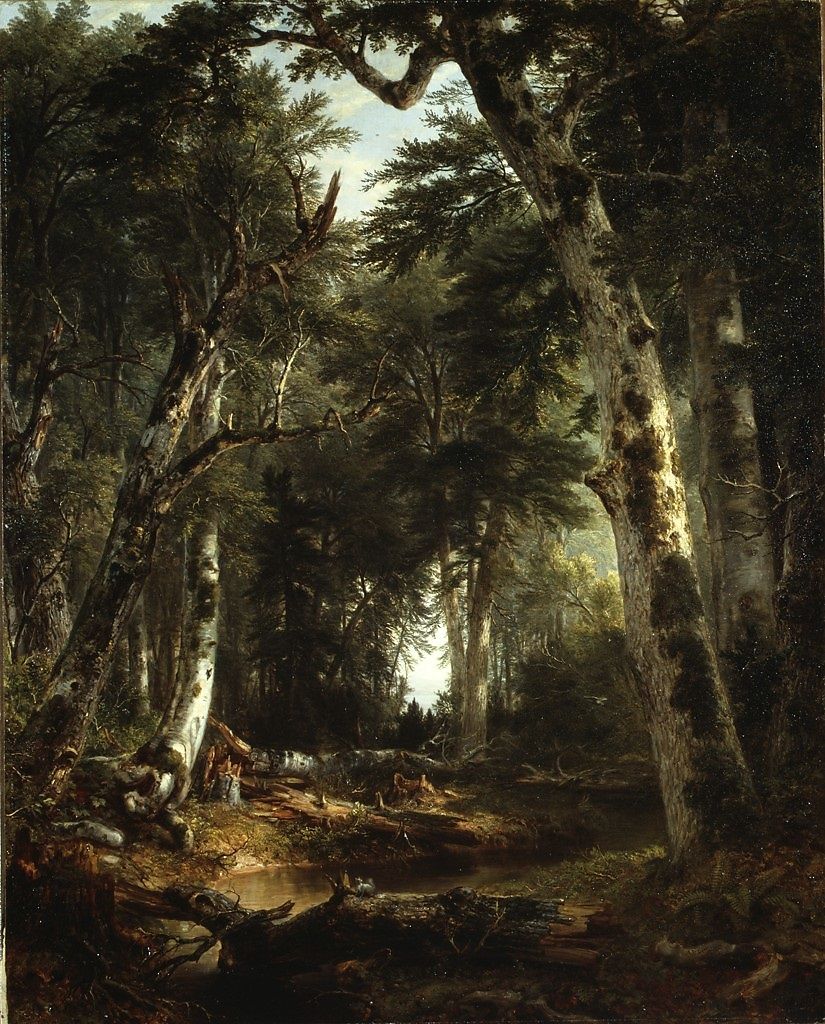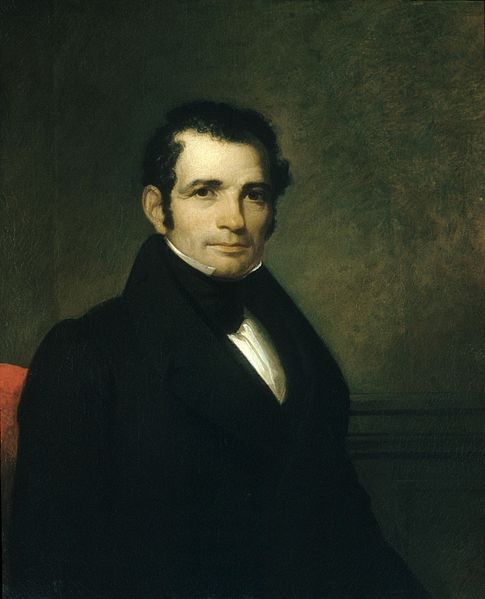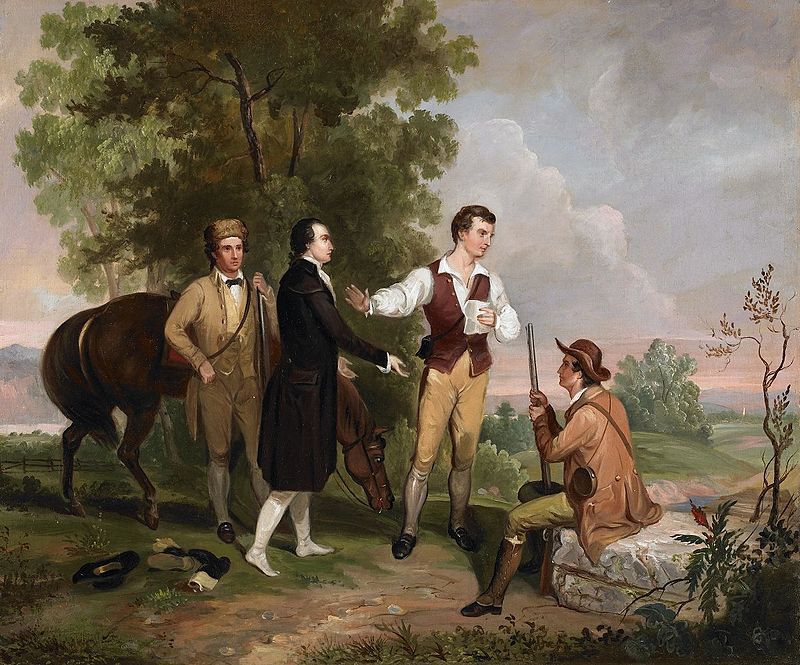An Appreciation:
|
Above: One of Durand's most popular works "Kindred Spirits" was done as a posthumous tribute to Thomas Cole, who is depicted admiring the wilderness with Durand's friend the poet William Cullen Bryant.
Below: "The Hunter." In addition to panoramas of the wilderness, Durand perfected vertical forest images such as "In the Woods" above.
Durand also painted portraits such as the one of the art collector Luman Reed (above). In "The Capture of Major Andre" (below), he depicts a scene from the history of the Hudson River valley .
|
Artist appreciation - Asher Durand
